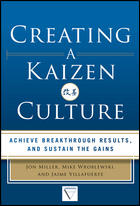Federal Agency Contracting by Negotiation
FOR MOST ACQUISITIONS, AGENCIES USE COMPETITIVE NEGOTIATION.

When agencies of the federal government procure supplies, federal laws and regulations require that they use a competitive process. The Federal Acquisition Regulations (FAR) detail two procedures to accomplish this—sealed bidding and competitive negotiation.
Sealed bidding is usually inappropriate for the procurement of complex services and manufactured goods. It is used for procurements based on price and when discussion of the bids is unnecessary. Agencies tend to use sealed bidding for routine construction, repairs, off-the-shelf supplies, and relatively non-complex services (e.g., custodial services).
For most acquisitions, agencies use competitive negotiation. They use a uniform contract and Request for Proposals (RFP). The RFP describes an agency’s requirements, terms and conditions. To facilitate contractors’ preparation of proposals and fair competition, RFPs must disclose all of the significant factors that the agency will consider in its evaluation.
Agencies must disclose the relative importance of the price and technical factors. If they do not, one may assume that the factors have approximately equal significance. Agencies can use and evaluate (1) technical factors, (2) price or cost, (3) past performance and (4) the company’s management. During the evaluation process, agency officials with decision-making authority and their subordinates may disagree in their analyses and conclusions.
Agencies may request that offerors make oral presentations to supplement their written proposals. This can facilitate dialogue and streamline source selection. Based on the ratings assigned to proposals, agencies can establish a “competitive range” of offerors with which it will negotiate before making an award. The agency must notify the offers that are eliminated at this stage of the process.
An agency’s contracting officer may negotiate (i.e., engage in discussions) with offerors with regard to the price, technical factors, schedule, past performance, weaknesses and other terms. The agency cannot favor one contractor or reveal one contractor’s price, technical solutions, intellectual property, and a variety of other information.
Agencies must conduct meaningful discussions, but they do not have to explain every single item that can be revised or improved. Agencies do not need to disclose their preference for an approach, whether the offeror’s price is relatively high, or minor weaknesses. If appropriate, they must identify problems with the offeror’s methodology. After discussions conclude, offerors in the competitive range may submit a final proposal revision.
Price and cost analyses are not the same. Agencies use price analysis to verify the reasonableness of the price, which is affected by the circumstances and complexity of the procurement. Cost analysis is used to evaluate the reasonability of the proposal’s cost elements.
The FAR recognizes that contractors must be sufficiently compensated in order to generate competition for government contracts and to motivate companies to perform quality work. With few exceptions, the FAR prohibits the use of profit ceilings. Agencies need only examine profits with regard to cost analyses.
Source selection’s stated goal is to enable an agency to procure the best value, or the greatest benefit in light of its needs and requirements. There is a tradeoff among price, technical excellence and performance considerations. An agency can choose a proposal other than the one with the lowest price tag. It must document its decision and rationale to avoid being overturned later if a disappointed offeror protests.
Agencies must notify unsuccessful contractors when they are eliminated. Within three days of receiving notice, disappointed offerors may request a debriefing. Pre-award notices and debriefings (which occur during the process of establishing a competitive range) differ in content from post-award notices and debriefings.
Post-award debriefings must include (1) an evaluation of the offer’s significant weaknesses, (2) the financial and technical rating of the successful contractor, (3) a ranking of offerors, (4) a brief rationale for the award and (5) responses to questions about source selection process. They do not include detailed comparisons of proposals or trade secrets. Contractors may later use this information in a protest.
Under the FAR, contractors may submit unsolicited proposals for innovative ideas to obtain government contracts. The government encourages such submissions, which may facilitate agencies’ objectives. Agencies, however, must still comply with laws and FAR regulations that require competition.
Looking for a reprint of this article?
From high-res PDFs to custom plaques, order your copy today!





